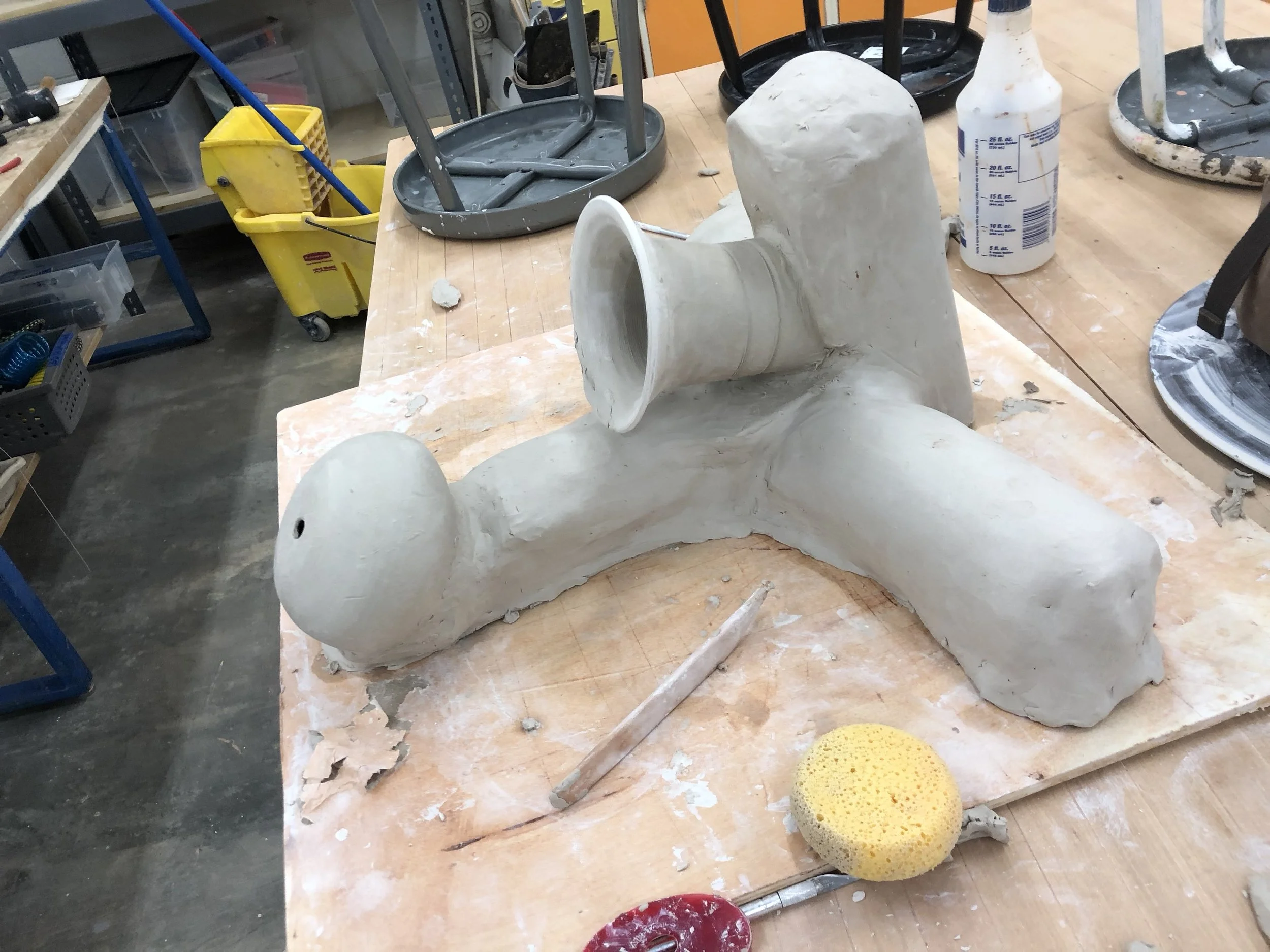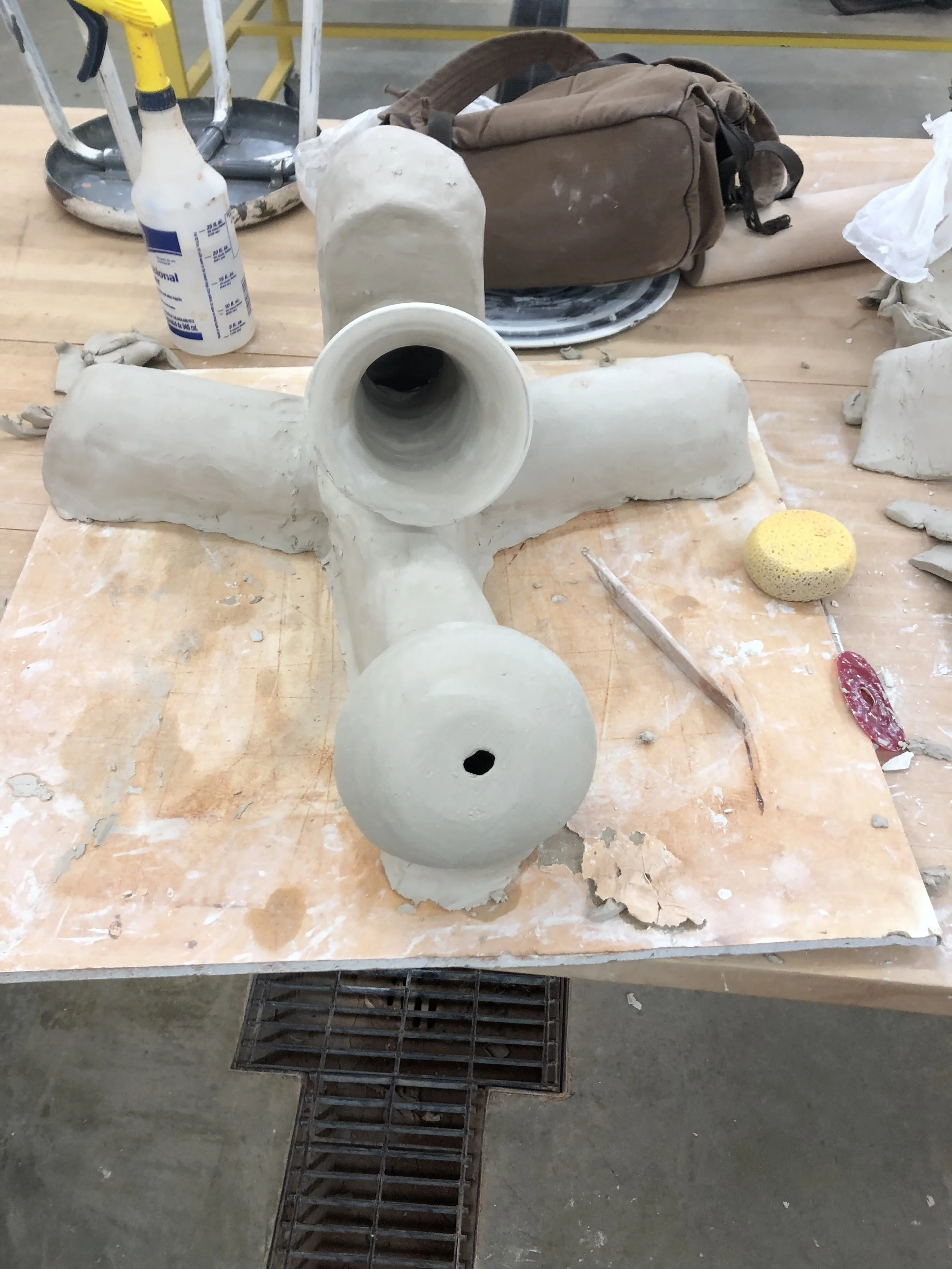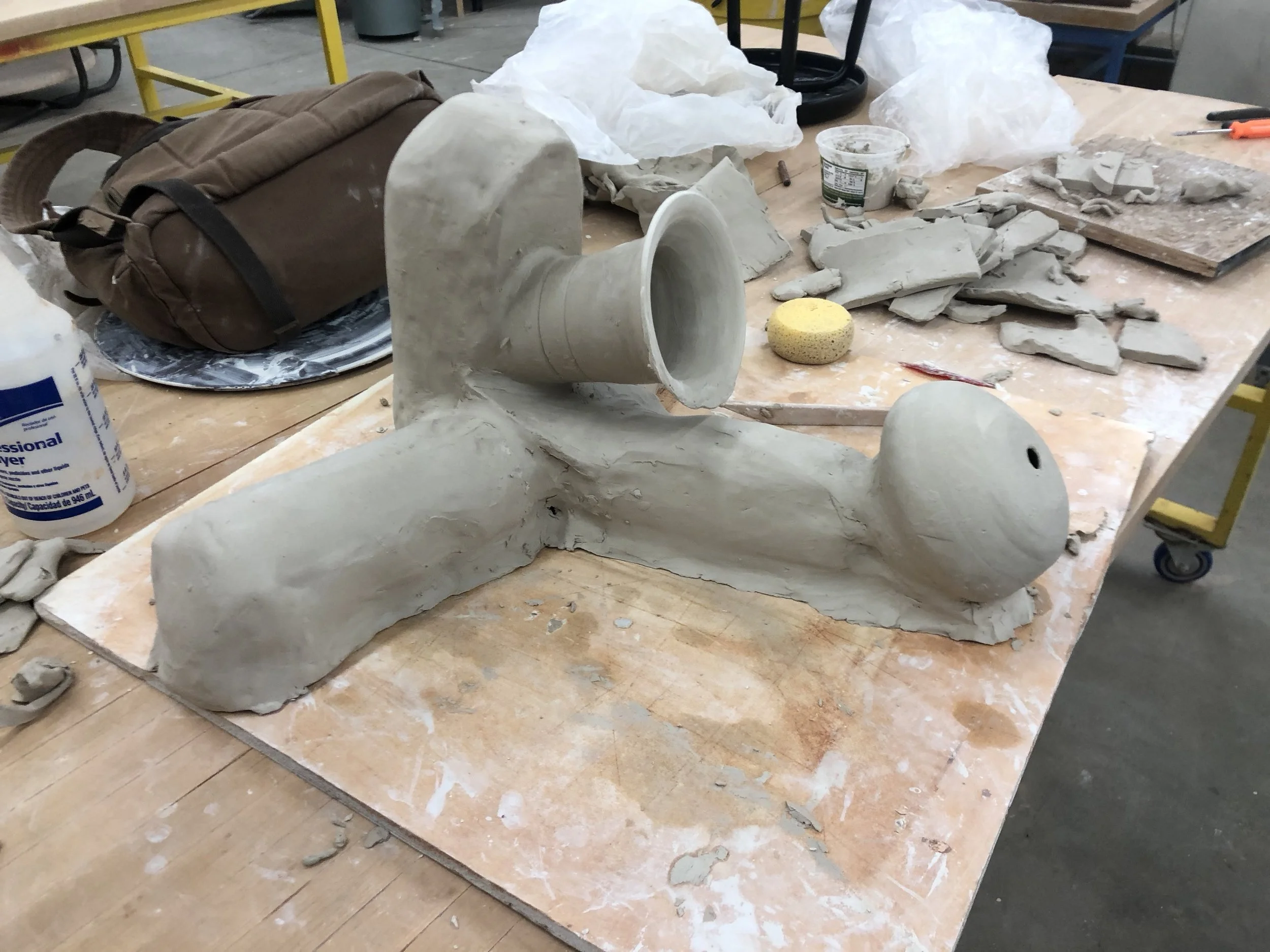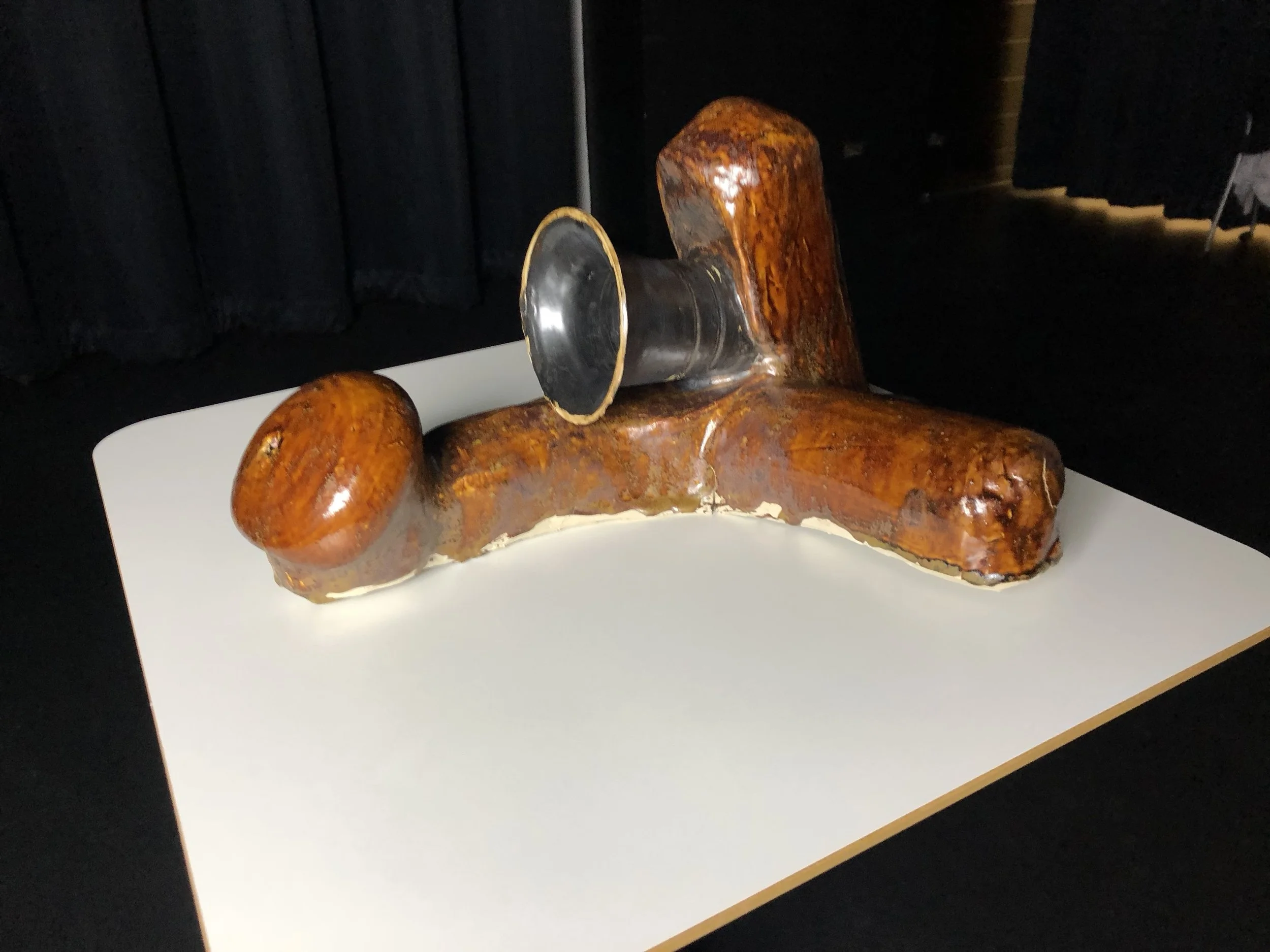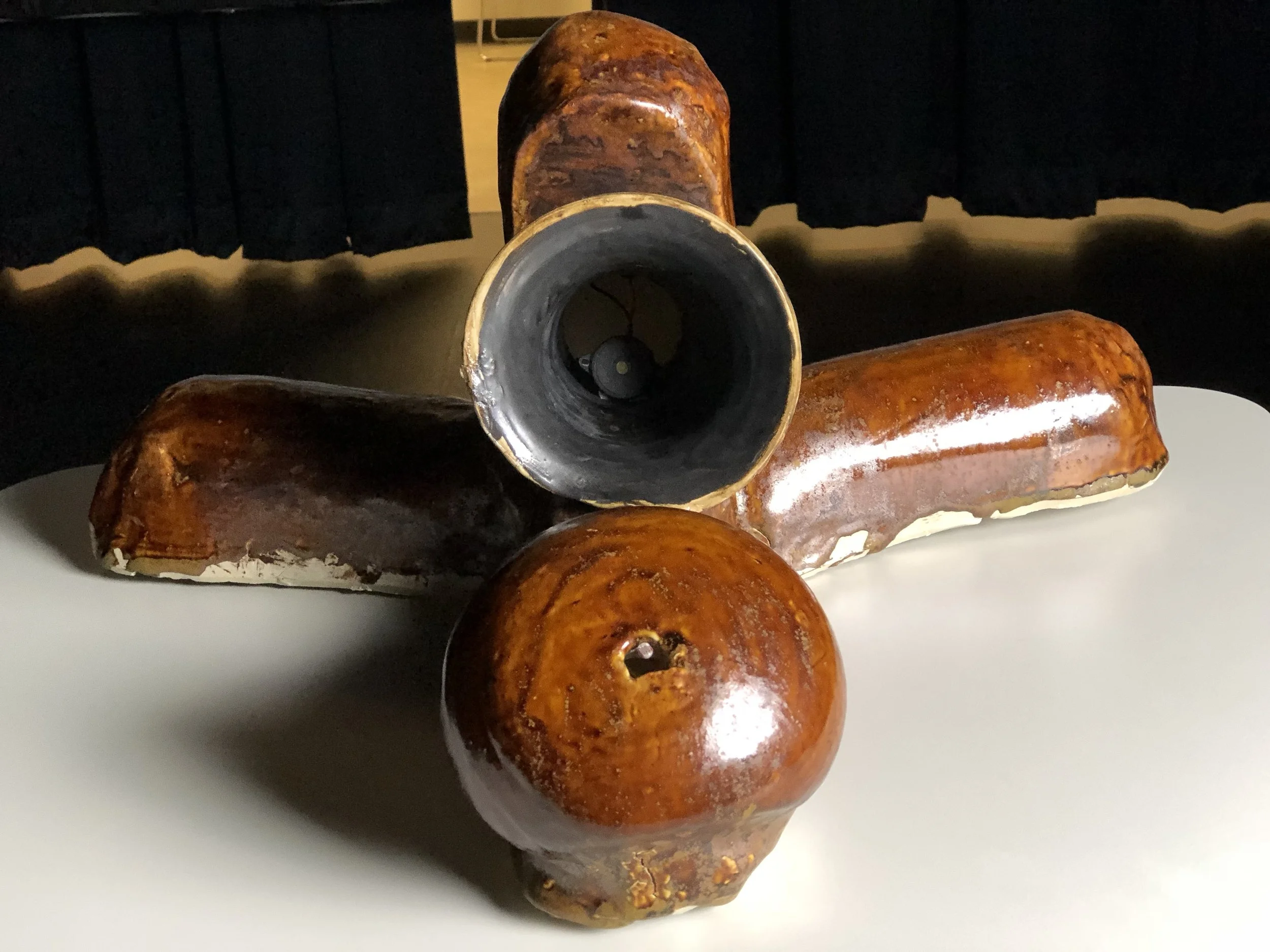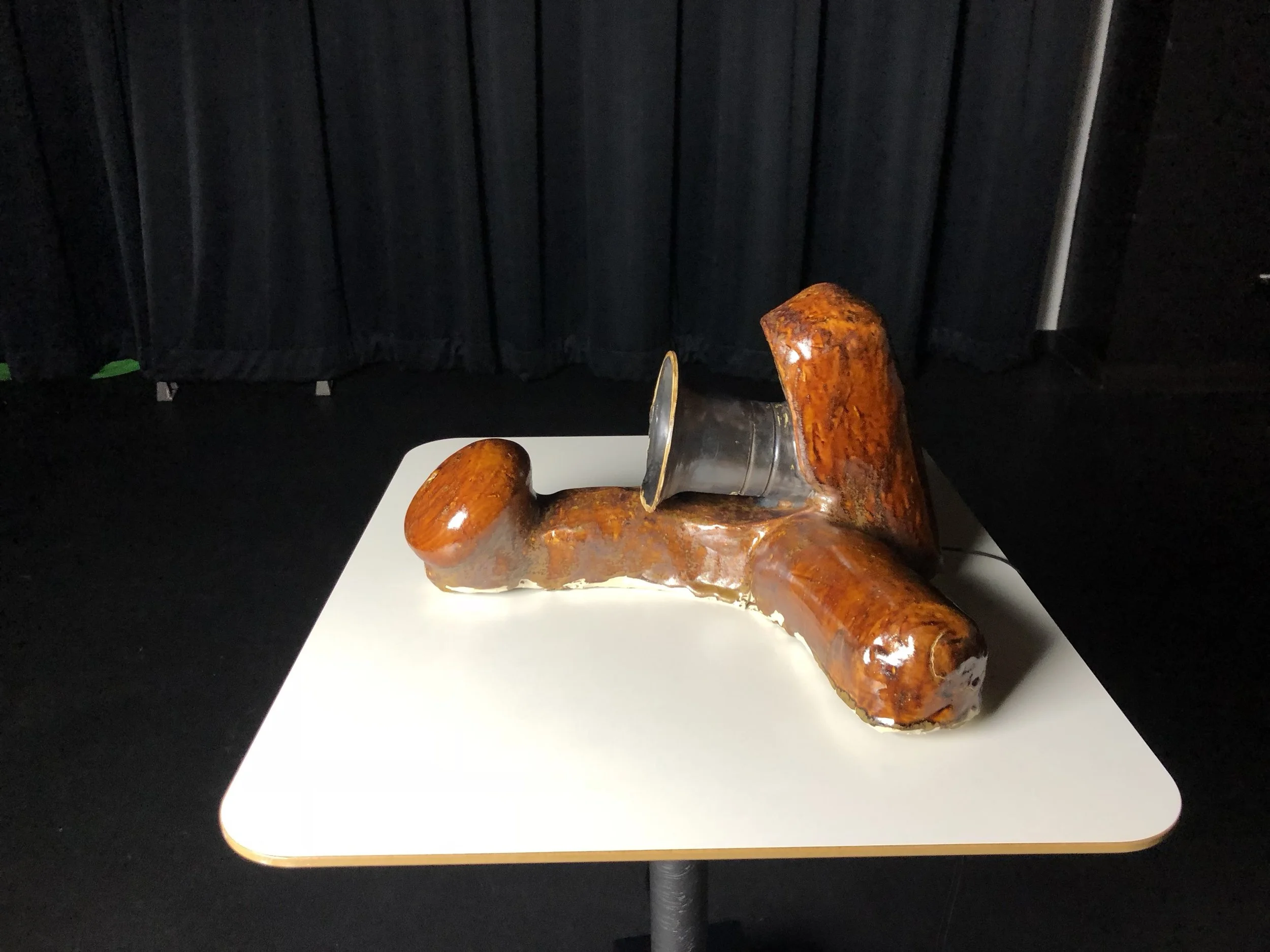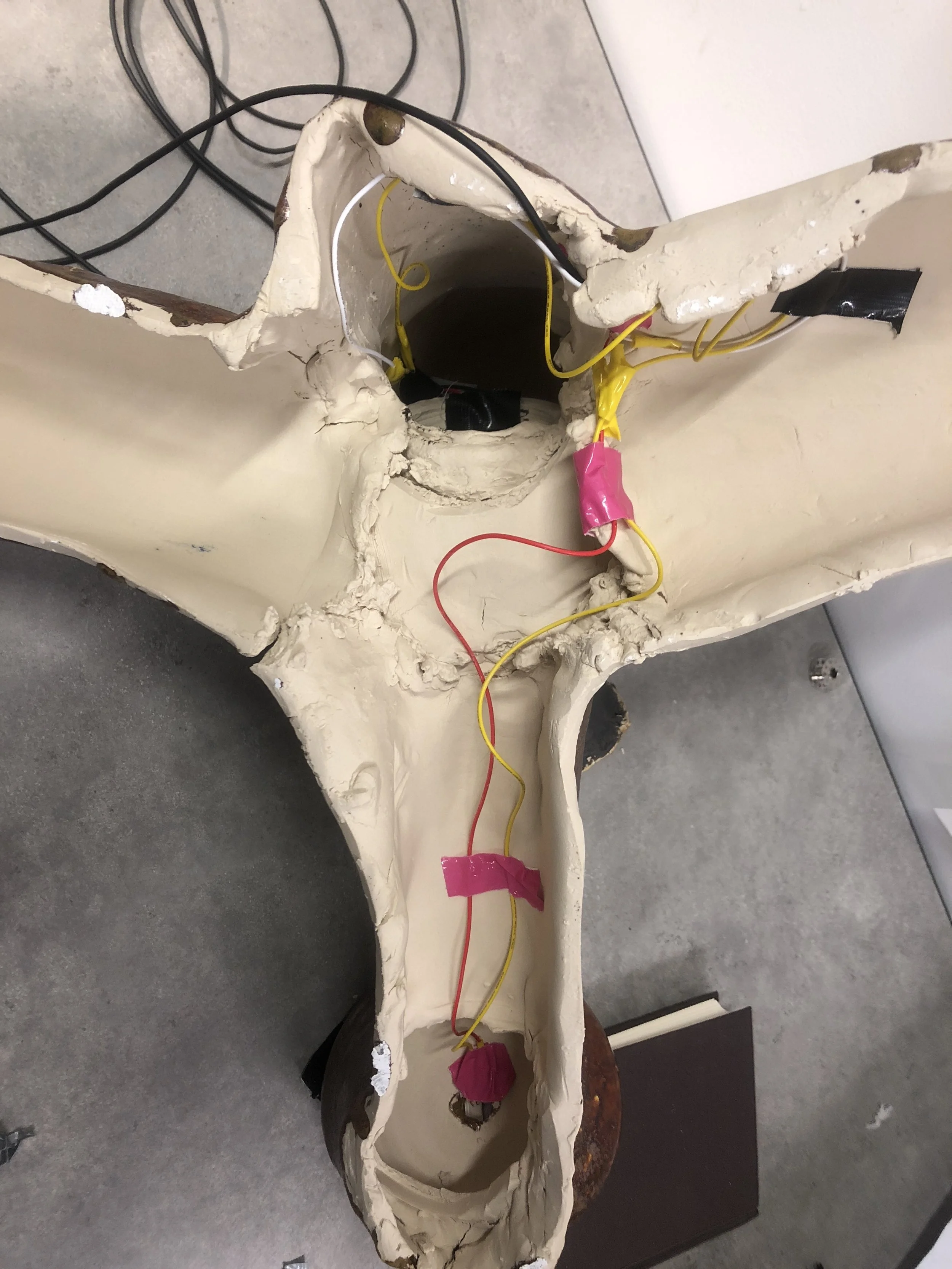Listen to Me
A call from the dead
The piece was inspired by the film Light is Calling by Bill Morrison. The film is composed entirely of deteriorated footage from old nitrate film stock. This decay has caused the image to be warped and distorted beyond saving, which creates a beautiful death of an image, and a futile hope of resurrection, an idea only complemented by the melancholy music. The transience and futility of resurrection is ultimately what the viewer should experience with the piece. The interaction of attempting to hear this feint image of a voice, but ultimately having it fade away prolongs interaction as the viewer hopes to discover something out of the short bits of words they hear. There is futility in trying to understand what the piece is saying. Nobody has the breath to get the piece to be something understandable before it fades away, back to distortion, and that was the primary goal. You can breathe life into the past, but you can never fully resurrect it.
Furthermore, there is the idea of how much intimacy you must have to resurrect something. By breathing or talking into the horn shape, you have to get close and intimate with the piece, something uncommon for the nature of sculptural ceramics, which are often seen as delicate or fragile. To even try to bring back the past is an effort that must be done with care and proximity, it cannot be done by simply touching the past at a distance. The whole of it must be taken on, good and bad. The option to touch at a distance for a distorted effect also had the unintentional outcome of reacting to viewers without their deliberate interaction, cuing them into the fact that this is a piece that can be interacted with. This is because they will walk in front of the light sensor on the end, blocking some of the light and making the distorted speaking louder.

